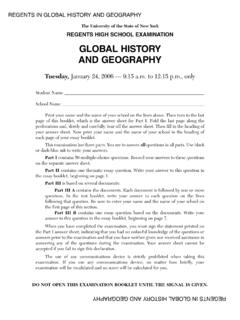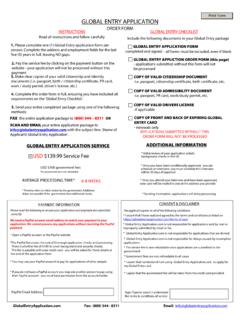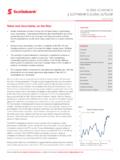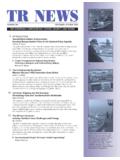Transcription of An Introduction to Global Health and Global …
1 An Introduction to Global Health and Global Health Ethics: A Brief history of Global Health By M. A. Palilonis Learning Objectives: 1. Identify population-level and individual-level Health measures across the history of Global Health 2. Consider competing theories of justice in Global Health 3. Evaluate the arguments for and against wealthy nations to provide international aid [2] A Brief history of Global Health In order to understand a broad concept, like Global Health , it is important to consider where it comes from.
2 The history of Global Health will be told here in broad strokes and will follow two major trends that shaped Global Health organizations: population Health through the control of infectious diseases and individual Health through the delivery of healthcare. Each of the stages discussed here, tropical medicine, international Health , the age of development and the rise of the NGO, overlap and converge. Overall, as the world became increasingly interconnected Global Health moved from the imperial concerns of tropical medicine to include more nations and other international organizations in the formations of international Health policy.
3 However, though the concept of Global Health changed greatly since its beginning, infection control and delivery of healthcare remained important core features of Global Health . Tropical Medicine This stage of Global Health is defined by the imperial system of colonization. In the 16th and 17th centuries European countries began to travel to new lands setting up the settlements that would eventually become the colonies of the 18th and 19th centuries. Countries such as Great Britain, France and Portugal founded colonies in places such as India, China and Africa, where settlers encountered new diseases and harsh Infectious diseases were devastating to both the native populations and to the European colonists.
4 For example, epidemic diseases completely decimated the Taino tribe of Hispaniola (now Haiti and the Dominican Republic), encountered by Columbus in 1492. By the end of the 17th century not a single member of the Taino tribe remained. Mortality rates for the European settlers were also high. For British colonists on Africa s Gold Coast (now Ghana) mortality rates were as high as 300-700 per 1,000 during the first year of the colony. The new diseases and harsh conditions of these colonies gave birth to the field of Tropical Tropical medicine developed as part of a larger blossoming of medical study and knowledge in the 19th century.
5 The medical field had begun to advance and apply new ideas, like germ theory, to the fight against diseases. In 1854, John Snow famously met with the Board of Governors and Directors of the Poor to report his findings on a cholera epidemic in one of London s poorest districts. He had connected the outbreak to the Broad Street water pump and proposed removing the handle as a means of quelling the The story of the Broad street pump represented a larger movement within medical science to view disease and treatment at the level of populations through epidemiology and public These new ideas also made [3] their way into the colonies, where innovations in healthcare were being applied at the population level and at the individual level: Military Medicine.
6 Within many colonies, the military was responsible for setting up healthcare facilities for soldiers and later the civilians who settled in the urban centers. The Colonial Medical Service of Great Britain, for example founded clinics in British colonies that concentrated on limiting the toll of epidemic diseases. These organizations were able to conduct some of the earliest epidemiologic studies as they followed illness and causes of death in the British Military as it expanded colonial borders. This was a time of great violence towards native populations and colonial medical officials implemented sometimes draconian public Health measures, such as forced quarantines, as a means to civilize native Population Health for colonies was to contrast the Health of European settlers to the tropical diseases of native populations.
7 Medical Missions: At the same time that colonial medicine was expanding at the population level, many religious organizations were also sending missionaries to colonies, which began to provide individualized medical services. Religious missions had been a part of colonization since the beginning, and in the 19th century the protestant missions that proliferated in areas like Africa began to incorporate medical care into their services. In this context, Health care was means of introducing Western culture and displacing traditional healers.
8 The focus for missions was improving the living conditions of native populations through conversion to Christianity and adoption of Western This conception was about using healthcare to save individual souls and so focused more on the delivery of services rather than the containment of disease. Tropical medicine encompasses the international Health measures between imperial nations and their far flung colonies. The scientific advancements coming from universities of Western countries were used largely as tools to protect colonists from tropical diseases and to control and civilize native populations.
9 At the same time, countries began to see the need for cooperation between nations for effective Health policies. Dr. David Livingstone opened the Kolobeng Mission in Botswana in 1847. Above, cartoon of iconic meeting with Henry Morgan Stanley of the New York Herald in 1869. [4] International Health In addition to medicine, the 19th century saw great economic and technological expansion. Trade routes crisscrossed the globe with goods, people and diseases crossing Between 1816 and 1899 six Global cholera pandemics killed thousands as the disease spread across trade routes from Asia and the Middle East to Eastern and then Western Europe.
10 In response, physicians and diplomats from 12 European governments, including Austria, France, Great Britain, Portugal, Russia, Spain, Turkey and five states of what would become Italy, met in Paris for the first time in 1851. The International Sanitary Convention would continue to meet, and acquire new members up until the First World War. Its purpose was to create an international code for containing epidemics, using the new methods of public Health , so that nation s trade and citizens could be protected. Though no policy was ever agreed upon, the International Sanitary Conventions were the first time nations came together to create an international Health Subsequent approaches to international cooperation were more successful.







